Where's the volatility gone?
If there’s one thing which has characterised markets during April, it’s been a lack of equity volatility. This is not just a psychological bias after coming off a US regional banking crisis last month, the numbers confirm it as well – risky assets have been acting ‘boring’, to the extent that an avid lover of markets could ever describe them as boring.
A better way to describe this might be that equity markets are acting complacent, and blissfully pricing away tail risks.
The sell-off in equities last night, following news of First Republic Bank’s poor earnings release and intention to sell part of their mortgage book, is real-time proof that the market was not ready for risks like “the banking crisis isn’t over yet”.
The current go-to measure of equity volatility, the CBOE VIX Index, is approaching the low levels seen throughout 2021 and until last night had been doing nothing but declining for over a month.
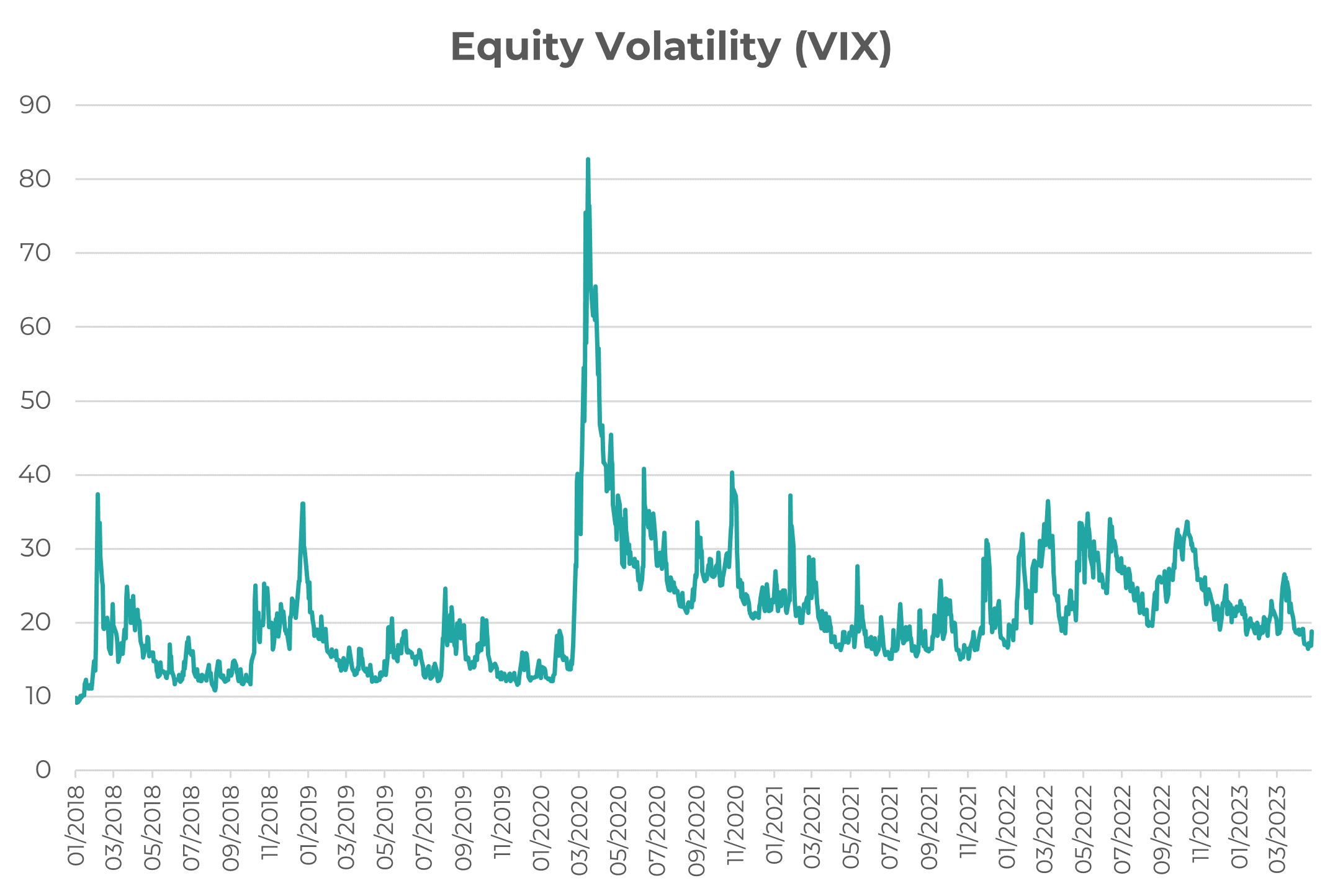
That picture is in stark contrast to the picture fixed income markets are painting, not just in bond volatility (MOVE Index), but also in measures of where credit risk is priced into interbank lending like the ‘TED Spread’:
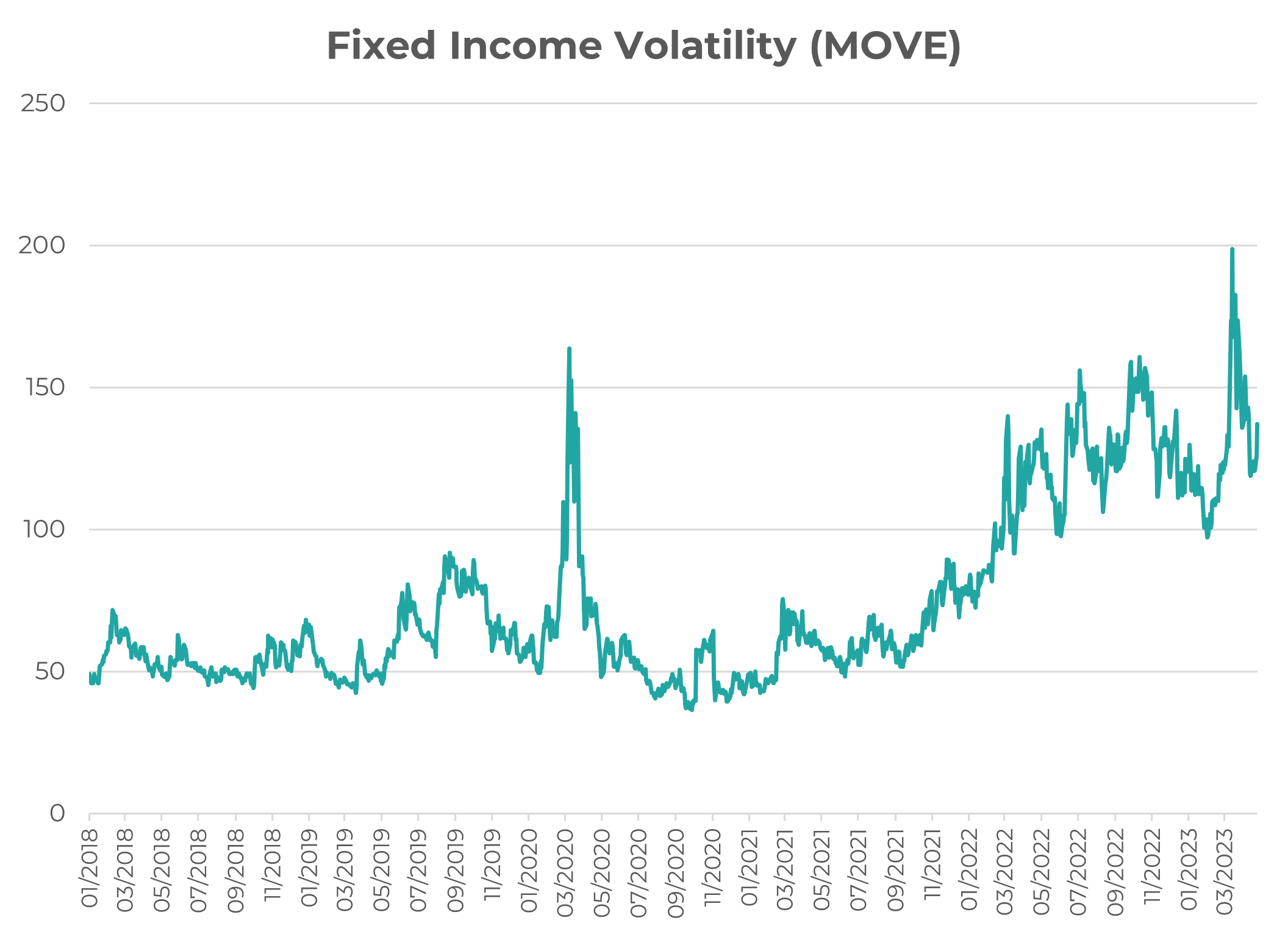
Source: Bloomberg, 26/04/2023
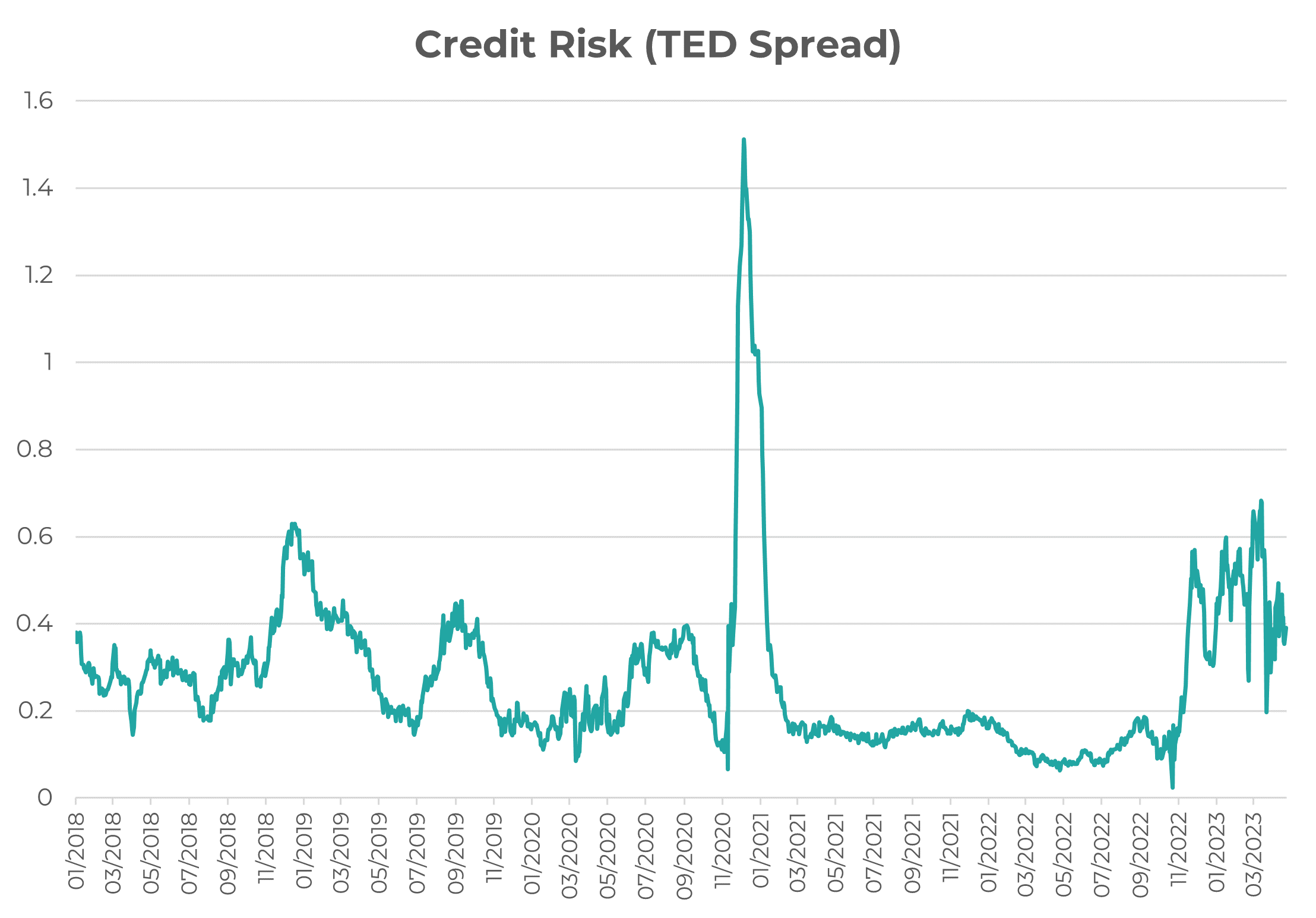
Source: Innova Asset Management, Bloomberg, 26/04/2023. 3-month LIBOR – 3-month US T-Bill
Granted these measures have come down meaningfully from their March levels, but these are still high readings relative to recent years and does not suggest the level of complacency towards risk that the equity market is showing.
What are markets pricing?
There is a wealth of useful market data which shows what levels of volatility (and risk) markets are positioning for – for sake of brevity, we’ll look at two key metrics for this note: S&P 500 option pricing and the daily trading range for US large cap stocks.
First, a brief primer on options for the chart we’re about to look at.
Implied volatility is simply a metric of how much volatility the market expects a certain asset (or in this case, index) to have between now and whenever the option expires. Higher implied volatility implies greater uncertainty and the level of ‘risk’ the market is anticipating – and how much investors are willing to pay for insurance to protect against said risk.
We look at two different options below:
- ‘3M 100 VOL’ (green) means an option which has a strike price at the same level as the S&P 500 is at today
- ‘3M 25DP VOL’ (purple) means a put option which has a ~25% probability of being in the money at expiration, this is also known as a ‘crash put’ since the only time this option will be in the money is if the market sells off heavily
Implied Volatility – 3-month S&P 500 Options
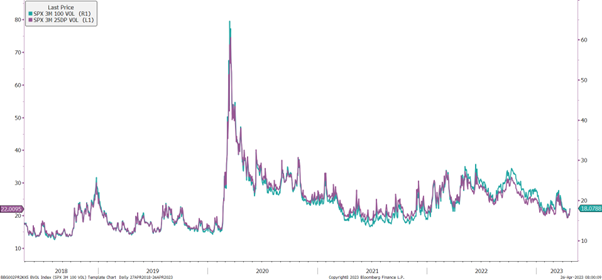
Source: Bloomberg, 26/04/2023
This chart is telling us that not only have market expectations of future volatility been declining steadily for a year, but there is a similarly declining demand for insurance on a severe market fall – we also call this ‘pricing out tail risk’. Even following a shift in thinking last night that ‘maybe the banking risks aren’t over’, these measures didn’t manage to rise back to levels they were trading at before the March banking panic.
That’s implied volatility, what about the volatility which is actually occurring, ‘realised volatility’?
One clean way to look at realised volatility is to see how much the index moves each day, in this case using a 1-month rolling average to reduce the noise in the data.

Source: Innova Asset Management, Bloomberg, 26/04/2023
We measure this by assessing the daily move as a % of the open price to control for the index gaining/losing value over time. The data tells us that whilst the daily range for the S&P 500 is still slightly higher than what we saw pre-pandemic and in the middle of the 2021 bull market, that range (‘volatility’) has been steadily declining since Q3 2022, even accounting for last night’s move.
We can also confirm this
using a more granular look at a sample of the largest companies from each sub-industry
within the S&P 500:
| Current | 1Y Average | Since 2020 | |
| IT | 1.87% | 3.16% | 2.93% |
| Communications | 2.16% | 3.18% | 2.71% |
| Discretionary | 2.50% | 3.65% | 3.32% |
| Financials | 1.33% | 2.03% | 2.04% |
| Energy | 1.75% | 2.76% | 2.90% |
| Health Care | 1.60% | 1.99% | 2.06% |
| Staples | 1.01% | 1.70% | 1.72% |
| Materials | 1.41% | 2.14% | 2.06% |
| Industrials | 1.34% | 2.08% | 2.31% |
| Utilities | 1.44% | 2.04% | 2.08% |
| Real Estate | 1.91% | 2.54% | 2.41% |
Implications for Portfolios
We’ve established that the volatility in risky markets has been going down, and that the market is pricing reduced volatility and a clear lack of concern about tail risks for the next quarter (if not longer) – how should an investor think about this?
Contrary to popular belief, the VIX may not be the best gauge of how volatility should impact your portfolio.
Let’s first establish that most of the time, the VIX reacts to changes in the S&P 500 price, it is not the leading indicator, but it is useful to show how the market is reacting to what’s just happened – the chart below shows the negative correlation between price and VIX (rising S&P 500 normally leads to a lower VIX and vice versa):
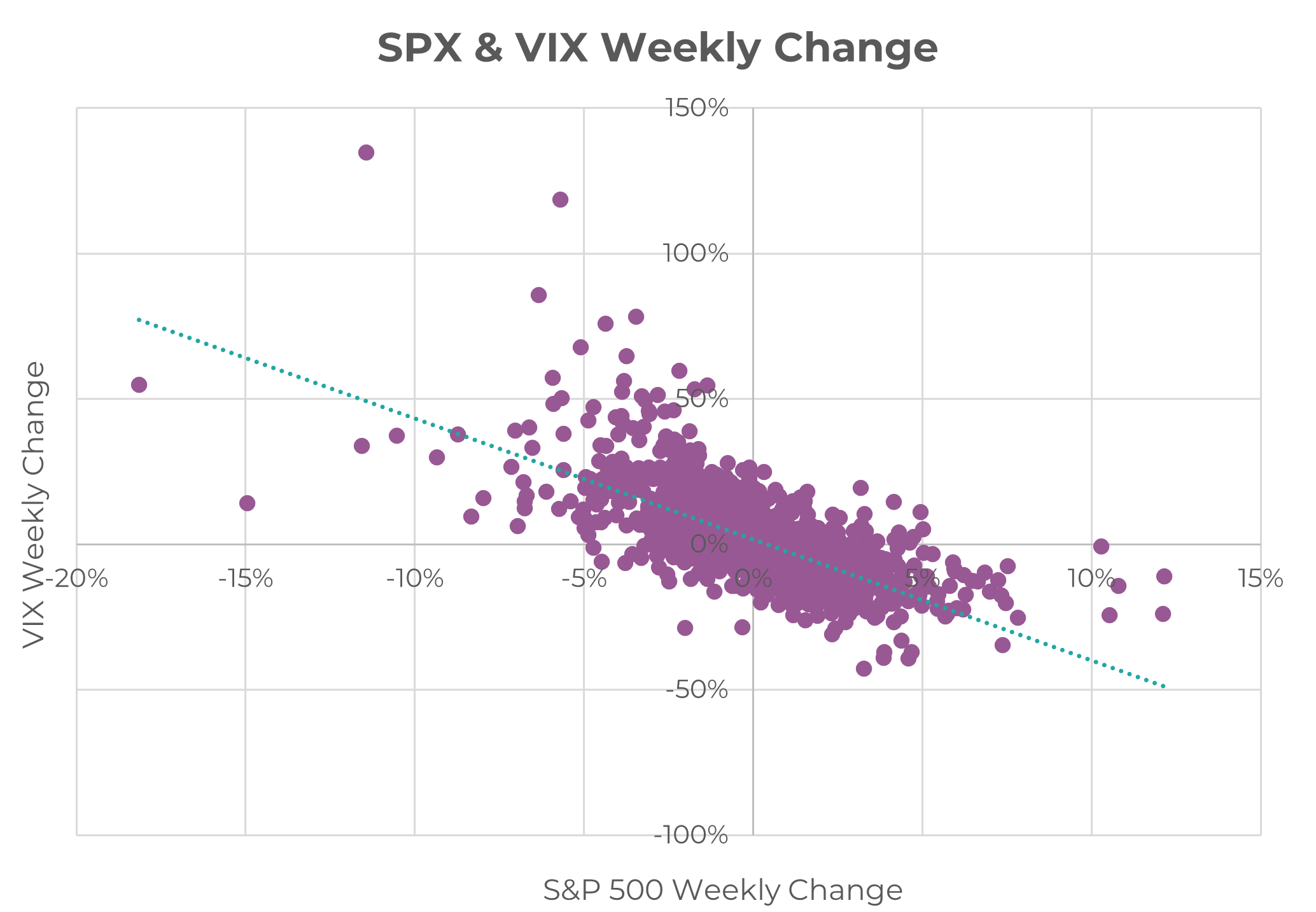
Source: Innova Asset Management, Bloomberg (1990 – 2023)
In fact, the level of the VIX has very poor predictability for future returns, even at the ‘extremes’ – where above 30 is meant to represent fear, and below ~15-20 represents calm/complacency.
Investors who try to model the future returns of the S&P 500 based on current VIX levels, or even based on how much the VIX has changed recently, are left with a very noisy and weak forecast:
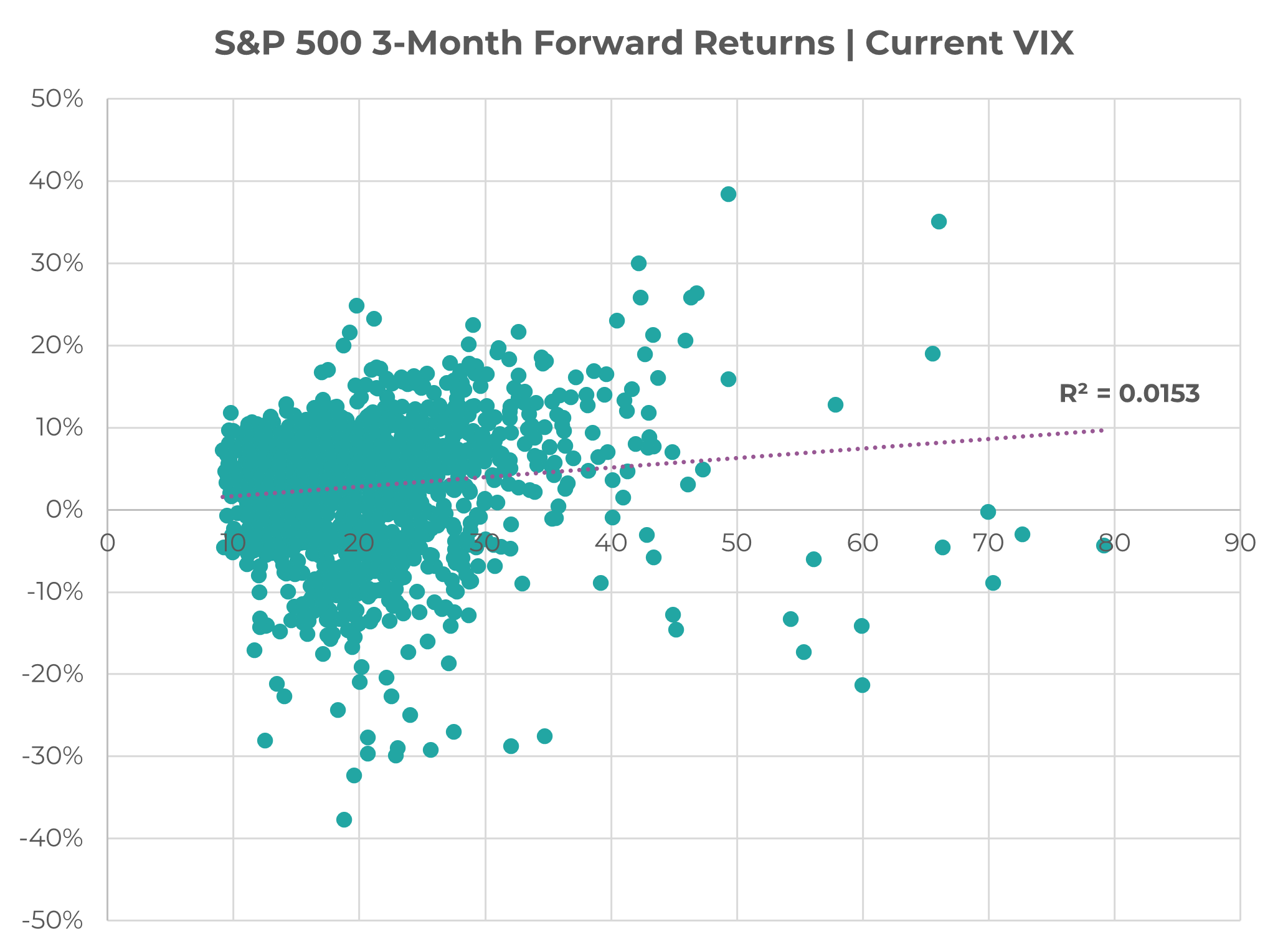
Source: Innova Asset Management, Bloomberg (1990 – 2023)
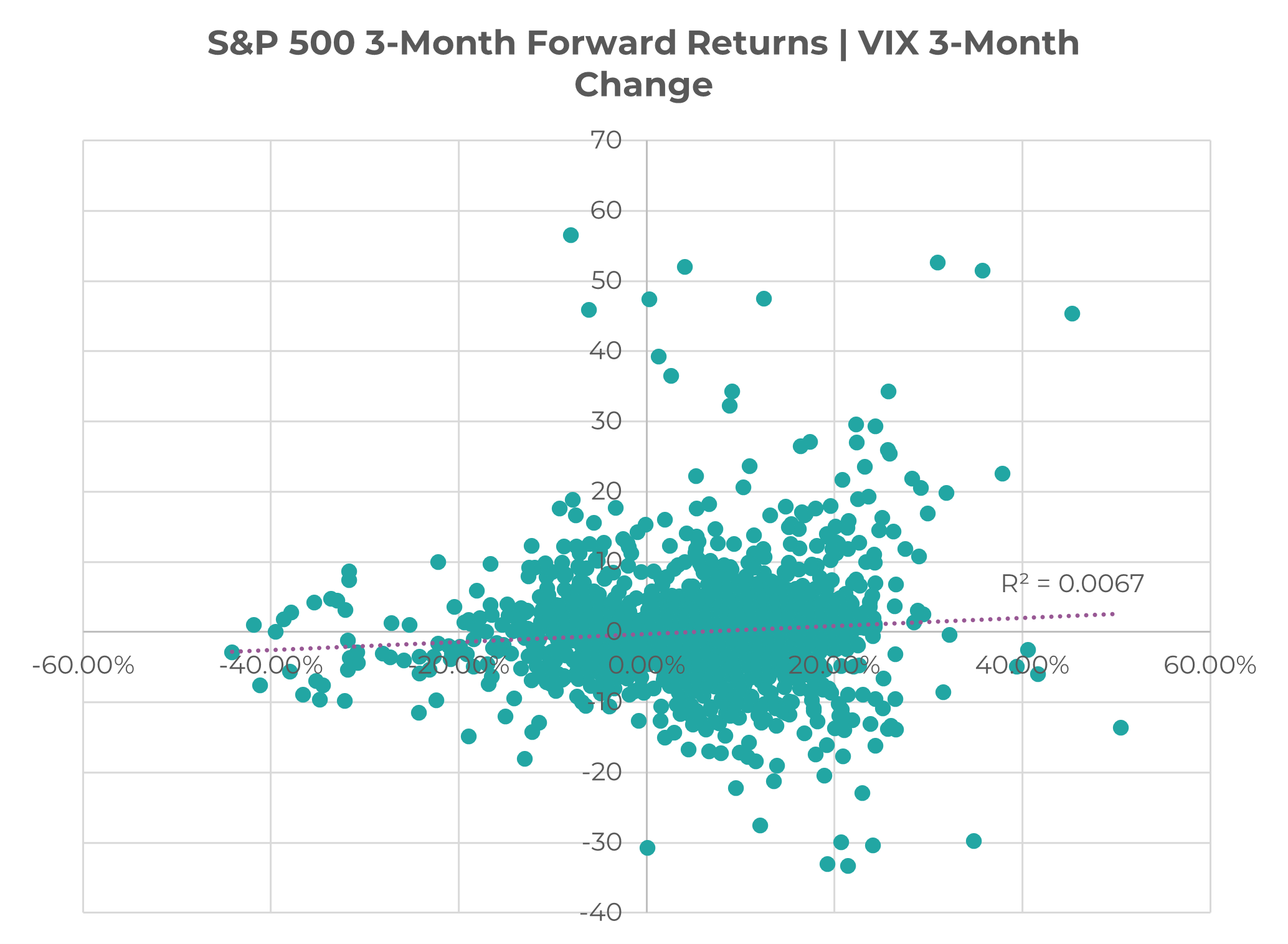
Instead, rather than using the VIX or any measure of volatility as a pure indicator, it’s best to consider how this impacts the risk-reward and unpriced risks inherent in whichever market you are operating in.
In an environment where risks are being priced out of the market, it’s easy for complacency to creep into all aspects of investing.
Allocators might decide it’s fine to start rotating back into risky assets in low-risk client profiles since volatility has subsided; investors might buy companies to the point of being overvalued since they aren’t moving around too much, and so on.
But that lack of volatility leading to complacency presents risks and opportunities. If you believe that risks are present but not priced in – such as a recession, a credit crisis or some other slowing of economic growth (and therefore company earnings) – then you want to avoid markets where tail risks are being priced away since they will inevitably become too expensive for your world view. On the other hand, complacency might build the opportunity to purchase unloved assets which ARE pricing in some risk but are being ignored by the broad crowd.
Stay mindful of the behaviour of the market, but be wary to only try to understand it, without necessarily following it blindly. We believe that approach leads to far better performance over market cycles.
3 topics

